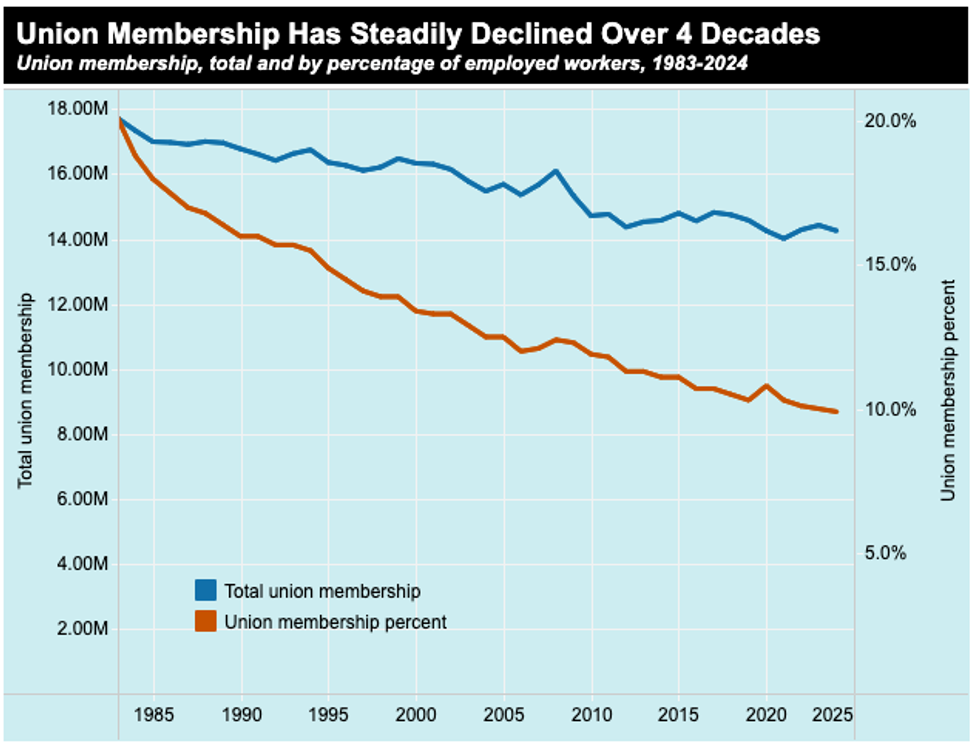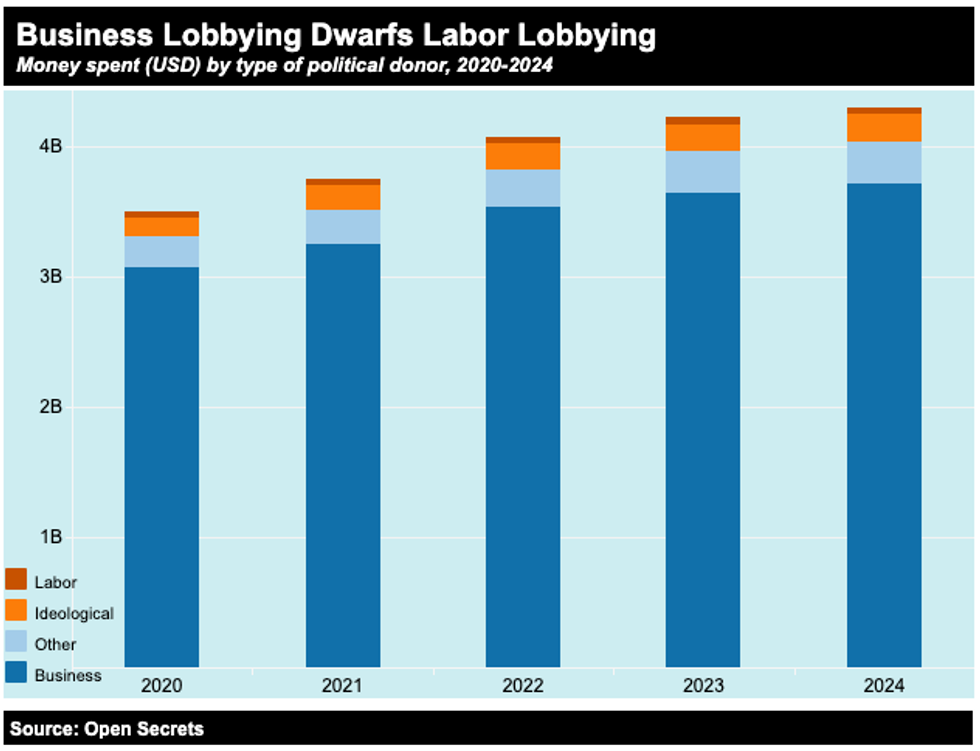Unions are a critical working-class institution. They are one of the most effective organizations in the struggle against poverty, inequality, and economic insecurity.
They’re also deeply popular with the American public — a poll conducted by Gallup last year saw labor unions receive an approval rating of 70 percent.
But despite that broad public support, union membership has fallen steadily over the past four decades. Union density collapsed from 20.1 percent in 1983 to 9.9 percent in 2024, a record low. That’s a total loss of more than 3.4 million union members, from 17.72 million to 14.25 million union members out of a workforce of 88.29 million and 144.52 million, respectively.

The majority of the American public correctly sees this downward trend as harmful to both the country and the working-class. The slide also highlights the need for labor to dedicate more of its resources to organizing non-unionized workplaces rather than lobbying and political campaigns.
Our political system’s dependence on money is a serious structural barrier towards moving the country in a pro-labor direction. We see this in the massive deployment of economic resources at the federal level by lobbyists. And the disparity is jarring when you compare the federal spending by business lobbyists to labor.
From the beginning of 2020 to this past year, labor lobbyists spent more than $258 million, but this is dwarfed by the $17.1 billion doled out by the business sector. This is a ratio of 66 to 1 in favor of business. Corporate influence operations account for 86.7 percent of all federal lobbying spending, and they have zero interest in seeing the expansion of workers’ rights and power.

In other words, political spending is a losing game for organized labor. They cannot match the economic power of oligarchs and the corporations they control, leaving it with little political leverage and influence over our elected public officials.
Despite these structural disadvantages, the labor movement has scored some political victories. Unions endorsed Joe Biden for president in 2020 and donated $27 million directly to his electoral campaign. This paid some dividends. The Biden administration bolstered the National Labor Relations Board (NLRB) in a pro-labor direction, increasing the agency’s funding and appointing dedicated workers’ rights advocates.
However, as noted by journalist Hamilton Nolan, the opportunity to expand worker power was squandered — a record low of union density was reached after four years of a favorable administration.
Now the organized labor movement is forced to operate in a hostile, anti-worker environment for the next four years, and the brazen attacks have already begun.
In his first two weeks as president, Donald Trump fired General Counsel Jennifer Abruzzo and Board member Gwynne Wilcox. The latter dismissal generated a legal challenge, but until the courts settle the matter or a new Board member is appointed, the NLRB will remain a hamstrung federal agency.
The lack of quorum strips the Board’s ability to issue a number of important labor-related decisions that come across its desk and it leaves organizing workers vulnerable to both retaliatory attacks and illegal anti-union activities by corporations.
Research conducted by the Economic Policy Institute demonstrates that there are more than 60 million workers who want and are ready to join a union. Union resources need to be allocated towards organizing those workers, not politics. It would more than quadruple union density and increase the pool of resources available to the labor movement.
Organizing those 60 million workers strengthens our collective power, expands our dues base, develops more leaders, and increases our political influence. We can use our moral and material resources to combat the oncoming increases in the cost of living — thanks to Trump’s tariff regime — and the most unfavorable environment for labor organizing in recent memory.





